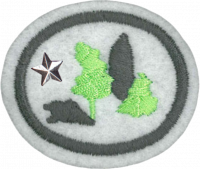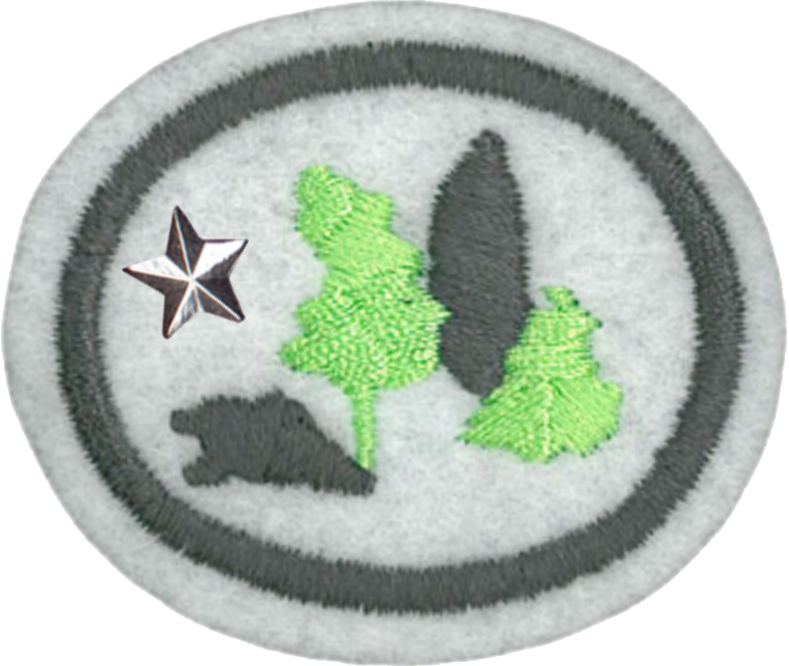Difference between revisions of "AY Honors/Shrubs - Advanced/Answer Key/es"
From Pathfinder Wiki
< AY Honors | Shrubs - AdvancedAY Honors/Shrubs - Advanced/Answer Key/es
(Created page with "{{clear}}") |
|||
| (18 intermediate revisions by 2 users not shown) | |||
| Line 1: | Line 1: | ||
| − | + | {{HonorSubpage}} | |
| − | |||
| − | {{ | ||
| − | |||
| − | |||
| − | |||
| − | |||
| − | |||
| − | |||
| − | |||
| − | |||
| − | }} | ||
| − | |||
| − | |||
| − | |||
<section begin="Body" /> | <section begin="Body" /> | ||
{{ansreq|page={{#titleparts:{{PAGENAME}}|2|1}}|num=1}} | {{ansreq|page={{#titleparts:{{PAGENAME}}|2|1}}|num=1}} | ||
| Line 30: | Line 16: | ||
{{clear}} | {{clear}} | ||
| − | + | {{clear}} | |
| − | + | {{clear}} | |
<noinclude></noinclude> | <noinclude></noinclude> | ||
| Line 40: | Line 26: | ||
<!-- 3. Cuidar un arbusto por lo menos durante un mes e informar los métodos de cuidado. --> | <!-- 3. Cuidar un arbusto por lo menos durante un mes e informar los métodos de cuidado. --> | ||
| − | + | {{clear}} | |
| − | + | {{clear}} | |
| − | + | {{clear}} | |
| − | + | {{clear}} | |
| − | + | {{clear}} | |
| − | + | {{clear}} | |
| − | + | {{clear}} | |
| − | + | {{clear}} | |
| − | + | {{clear}} | |
<noinclude></noinclude> | <noinclude></noinclude> | ||
| Line 67: | Line 53: | ||
{{ansreq|page={{#titleparts:{{PAGENAME}}|2|1}}|num=4a}} <!--T:6--> | {{ansreq|page={{#titleparts:{{PAGENAME}}|2|1}}|num=4a}} <!--T:6--> | ||
<noinclude></noinclude> | <noinclude></noinclude> | ||
| − | |||
| − | |||
| − | |||
| − | |||
| − | |||
| − | |||
| − | |||
| − | |||
| − | |||
| − | |||
| − | |||
| − | |||
| − | |||
| − | |||
| − | |||
| − | |||
| − | |||
<noinclude></noinclude> | <noinclude></noinclude> | ||
| Line 89: | Line 58: | ||
{{ansreq|page={{#titleparts:{{PAGENAME}}|2|1}}|num=4b}} <!--T:7--> | {{ansreq|page={{#titleparts:{{PAGENAME}}|2|1}}|num=4b}} <!--T:7--> | ||
<noinclude></noinclude> | <noinclude></noinclude> | ||
| − | |||
| − | |||
| − | |||
| − | |||
| − | |||
| − | |||
| − | |||
| − | |||
| − | |||
| − | |||
| − | |||
| − | |||
| − | |||
| − | |||
| − | |||
| − | |||
| − | |||
| − | |||
| − | + | {{clear}} | |
<noinclude></noinclude> | <noinclude></noinclude> | ||
| Line 117: | Line 68: | ||
<!-- 5. Observar algún arbusto por lo menos durante un mes e informar la mayor cantidad de insectos posible (por lo menos tres) que vengan a buscar polen o néctar en sus flores. --> | <!-- 5. Observar algún arbusto por lo menos durante un mes e informar la mayor cantidad de insectos posible (por lo menos tres) que vengan a buscar polen o néctar en sus flores. --> | ||
| − | + | {{clear}} | |
| − | + | {{clear}} | |
<noinclude></noinclude> | <noinclude></noinclude> | ||
| Line 133: | Line 84: | ||
<!-- 7. Hacer una lista de por lo menos 60 clases diferentes de arbustos y colectar, preservar e identificar correctamente flores, hojas, semillas, vainas de semillas o ramas con brotes de 20 arbustos citados en su lista. --> | <!-- 7. Hacer una lista de por lo menos 60 clases diferentes de arbustos y colectar, preservar e identificar correctamente flores, hojas, semillas, vainas de semillas o ramas con brotes de 20 arbustos citados en su lista. --> | ||
| − | + | {{clear}} | |
<noinclude></noinclude> | <noinclude></noinclude> | ||
| Line 140: | Line 91: | ||
==Referencias== | ==Referencias== | ||
| − | |||
<noinclude></noinclude> | <noinclude></noinclude> | ||
| − | + | {{CloseHonorPage}} | |
Latest revision as of 00:33, 15 July 2022
Arbustos - Avanzado
Nivel de destreza
2
Año
2012
Version
03.12.2025
Autoridad de aprobación
División Sudamericana
1
Tener la especialidad de Arbustos.
Para consejos e instrucciones, véase Arbustos.
2
Saber qué son los arbustos decorativos y descubrir, como mínimo, una técnica de decoración de arbustos.
3
Cuidar un arbusto por lo menos durante un mes e informar los métodos de cuidado.
4
Citar tres ejemplos de las siguientes clases de arbustos:
4a
Arbustos floridos
4b
Arbustos fructíferos
5
Observar algún arbusto por lo menos durante un mes e informar la mayor cantidad de insectos posible (por lo menos tres) que vengan a buscar polen o néctar en sus flores.
6
Nombrar tres alimentos importantes, silvestres o cultivados, encontrados en arbustos de su localidad.
7
Hacer una lista de por lo menos 60 clases diferentes de arbustos y colectar, preservar e identificar correctamente flores, hojas, semillas, vainas de semillas o ramas con brotes de 20 arbustos citados en su lista.



